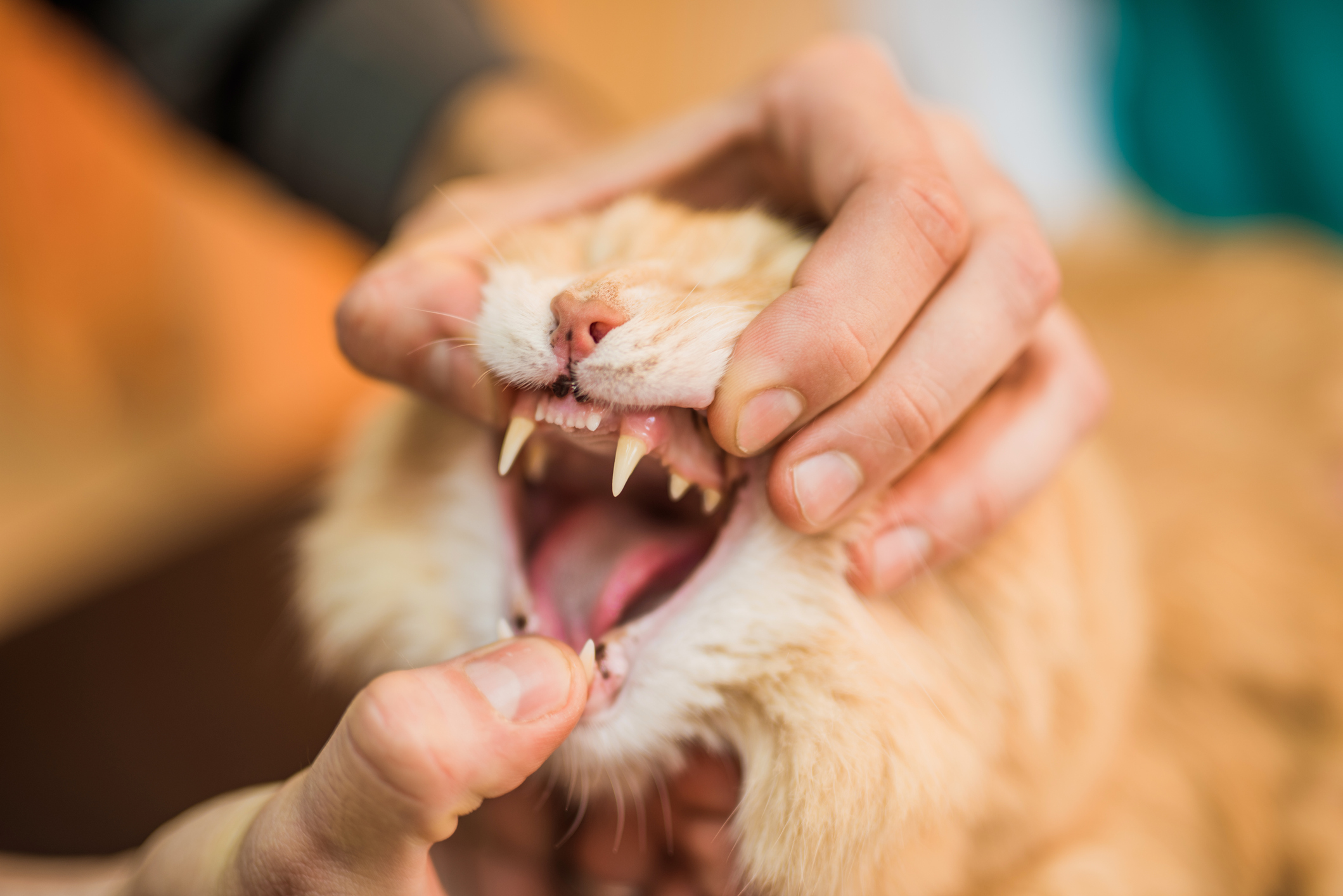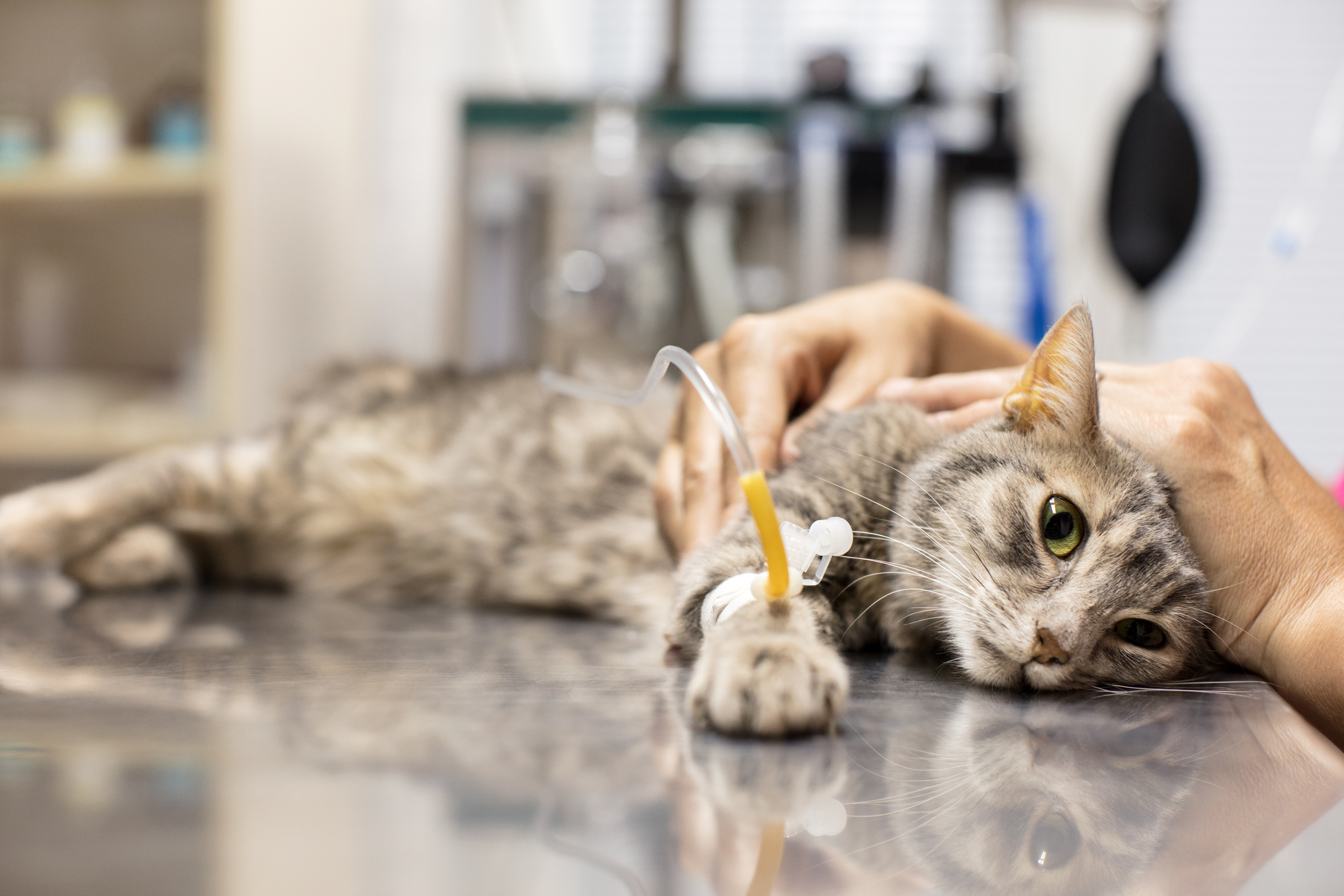
4 Common Types of Cat Cancer
Few diagnoses in our furry friends are as scary and overwhelming as cancer. For most pet parents, finding out their beloved cat has cancer can be just as devastating as hearing the news from a friend or family member.
Cats do not develop cancer quite as frequently as dogs do. However, approximately 1 in every 5 cats will develop cancer in their lifetime. Cat cancer can take many of the same forms as dog cancer and even cancer in humans can. However, a few specific types have been found more frequently in cats than the others.
Here is some basic information about the most common forms of cat cancer.
1. Lymphoma
Lymphoma is the most common form of cancer found in cats. The cancer is rooted in the lymphocytes—a type of white blood cell that plays a key role in your kitty’s immune system.
When lymphocytes begin to reproduce uncontrollably, they form a cancerous tumor in a specific part of the body. In cats, lymphoma most often forms tumors in the gastrointestinal tract, lymph nodes, kidneys, liver and spleen.
Cats who have not been vaccinated against the feline leukemia virus (FeLV) may have an increased risk of developing lymphoma. Prior to the production of the FeLV vaccine, the virus was one of the leading causes of some forms of lymphoma in cats. Unfortunately, your cat may develop lymphoma even if they have been vaccinated.
Lymphoma is most often treated with chemotherapy, which usually prompts a positive response from the cancer. A cat in remission from leukemia may relapse, but prompt treatment can prolong your cat’s life.
2. Squamous cell carcinoma
Squamous cell carcinoma (SCC) is one of the most common forms of skin cancer in cats. Tumors typically form on exposed and light-colored skin including the ears, nose and eyelids. This form of the cancer may be prevented by shielding your cat from ultraviolet rays from the sun and is often easily treated if the tumor is detected quickly.
Unfortunately, another, more common form of SCC occurs in the mouth of cats. Oral SCC is much more aggressive and has a much poorer prognosis than that of the skin. Tumors may be present along the jaw or inside the mouth—the latter of which are quite difficult to identify.

Surgery may be performed to remove an SCC tumor, but if the cancer has spread to other organs, further treatment may not be as effective.
3. Mammary cancer
Mammary cancer develops in the mammary glands of cats. It most often affects female cats, particularly those who have not been spayed. The majority of mammary tumors are malignant and have a high chance of spreading to other parts of your cat’s body.
Because this form of cancer is related to reproductive hormones, your cat’s risk for mammary cancer can be significantly reduced by having her spayed before her first or second heat cycle. However, the cancer does not usually appear until cats reach their senior years.
Once detected, surgery to remove the tumor and the mammary glands can be performed. If the cancer is caught early, the prognosis following surgery is quite good, with many cats living for years after treatment. If the cancer has spread to the lymph nodes or other areas, chemotherapy may be required.
4. Fibrosarcoma
Fibrosarcoma affects cells found in fibrous connective tissues, including ligaments and muscles. The cancer is particularly aggressive, growing quickly. Tumors may be able to be felt under your cat’s skin on any part of their body.
In rare cases, fibrosarcoma can develop at the site of vaccinations or other injections in cats. This is called feline injection-site sarcoma. Other forms of the cancer may develop naturally with no true underlying cause.
Surgery is usually the primary form of treatment for fibrosarcoma. Unfortunately, because of the aggressive way these tumors spread, complete surgical removal can be challenging. Chemotherapy or radiation may also be used to target cancer cells that were unable to be removed.
After your cat’s diagnosis
One thing all forms of cancer have in common is that early detection of symptoms is crucial for improving your cat’s prognosis. Pet parents should be on the lookout for symptoms of illness and cancer in cats, including:
- Lumps or bumps on the skin
- Swollen lymph nodes
- Decreased appetite
- Lethargy
- Hiding
- Behavioral changes
- Weight loss
- Vomiting or diarrhea

Do not hesitate to make an appointment with your vet if your cat displays these symptoms. An examination and multiple tests are usually required to reach a diagnosis, and the earlier your cat is seen, the better.
With an accurate diagnosis of your cat’s form of cancer, you can begin finding treatments and therapies to help your cat manage their condition. Unfortunately, it is unlikely that your kitty’s cancer will be cured. Instead, surgery, chemotherapy, radiation and other alternative treatments may be used to help your cat reach remission and enjoy a high quality of life in spite of their disease.


